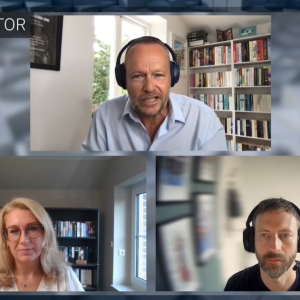Supply chain scheduling supremo i2 Technologies says it’s well ahead with plans for Customer Commitment, a combination of acquired sales configurator technology and its flagship Rhythm Supply Chain Planner in a suite that the company hopes will have it heading deep into the $11.5bn front office sector and on the tails of sales automation high-flier Trilogy.
The May 1998 purchase of Innomat, a tiny privately owned Finnish sales configuration specialist that has since operated as i2 Finland, brought with it what i2 described at the time as ‘some innovative modeling and representation capabilities’. What this boils down to is a web-based sales configurator front-end for supply chain management. Technically, the appeal was Innomat’s use of a graphical metaphor which allows for intuitive modeling of all levels of a product’s configuration, as opposed to what can be a complicated process of description that is essentially programming.
The Customer Commitment product has been availabile since July 1998 in a version that melds together the Innomat software with i2’s Rhythm Supply Chain Planner in-memory optimizer and an associated Demand Fulfillment module. Trying to out-Dell Dell, Compaq Computer spent $15m on the product last year but the computer-maker will have bought heavily into the notion of tighter integration across the three systems and the subsequent developments being promised by i2. This initial version of Customer Commitment is far from complete: there’s a need to add pricing configuration features, for one.
Development work is complex, however, as the key point of what i2 is doing here is changing the core configurator constraint and search logic. The end game is a supply chain planning engine which can evaluate both the availability and profitability of component items, so that the configuration engine will be capable of using profitability as a search constraint. In a sector such as PC assembly where margins are now wafer thin, such a prospect has huge pull.
Analysts at Gartner say there’s a need for tight integration in i2’s product so as to avoid a potentially long synching process where configuration results are passed back and forth between the Supply Chain Planner engine and server.
The theory is that in allowing real-time integration across front and back-end office procedures an organization’s salesforce could use Customer Commitment to quote with some assurance and in a single step both a feasible product configuration and an accurate timeline for product. That would mean that delivery date promises could be based on real constraints and actual material availability in the supply chain. In practice sales staff could custom configure a product on a laptop, select component options, check technical feasibility and may be even close out a deal with a quoted price, all on the fly. The company says such a product should be available in the third quarter 1999, some months earlier than anticipated.
i2 reckons with its latest version of Customer Commitment, businesses could start to optimize sales of complex make-to-order products much in the same way as they have used its constraint-based Rhythm planning engine to streamline product design, manufacture and distribution. The normally conservative i2 CEO appears bullish on its prospects. For the year 1998, i2 revenues grew 69% to $361.9m and Sanjiv Sidhu commented recently that going into 1999 i2’s salespeople were pretty much having their way. A primary constraint to future growth was the number of feet the company has on the street.
Prospects for growth in this arena may well be huge. Overall the market is expected to grow 58%, or $4.5bn, in 1999. But competition is fierce in this space. SAP and the ERP heavyweights are pushing in on i2 from one direction while Siebel, Trilogy and the rest of the customer relationship sector is pressing it from another. And pre-Y2K, the whole supply chain field has slowed. According to latest reports from AMR Research, the enterprise applications market analysis firm, the 46% revenue growth for 1998 sustained the market’s temporary rapid growth, but fell behind 1997’s 56% growth rate. The deceleration can be attributed to a slow down in IT spending for business applications as companies finished implementations in preparation for Y2K.






